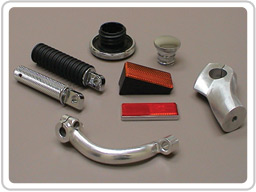A quick history lesson on mechanical assembly dates back to the mid 1700s when the manufacturers of the day realized that building a single part from multiple applications dramatically decreased costs and made repairs much faster. Interchangeable, mass-produced parts are still the backbone for mechanical assembly today.
Of course those parts use an endless array of materials and are asked to do some incredible things today, but the basics are still the same.
The term mechanical assembly is most often referred to putting components together in an assembly line, but more specifically, it refers to creating a complete product that performs a function. This is a key distinction when your company is in the planning and design phase of a new product or is looking for improvements.
So, for manufacturers, the emphasis is on the PROCESS of assembling parts. If you’re talking process, you’ll no doubt talk efficiency.
Product engineers love the challenge of finding the right design that will make a product perform the aforementioned functions well, but also how to produce it in a cost-effective manner.
Raise the production
Manufacturers generally pay assembly line employees by the hour and their customers like having products delivered fast and on-time. Clearly this comes down to producing more parts in less time.
Mechanical assembly services become less expensive with an increase in production — another foundation of assembly that can sometimes be forgotten in all the excitement of the exploratory design phase.
The advantages
Beyond the bottom-line basics, if you’re considering mechanical assembly services, it’s important to note that parts made from this process can be disassembled and reassembled at another location. This reduces production costs and those finished parts can be easily repaired in the same way. When improvements are needed, you can easily replace inefficient or poor-functioning parts.
Contact Product Development Solutions today and let’s talk about putting your products together.

